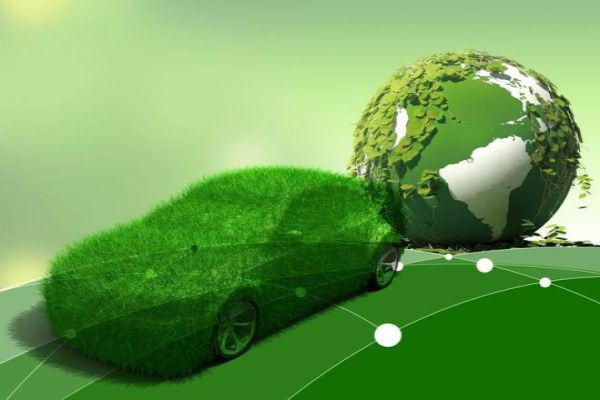2017 has gone. In 2017, the production and sales of new energy vehicles in China were close to 800,000 units, reaching 794,000 and 777,000 respectively. According to the prediction of relevant institutions, China will officially enter the new energy vehicle million era since 2018. This paper will analyze the development trend of China's new energy automobile industry in 2018 and explore the development of the industry.

With the development of new energy vehicles, the ecology and competition pattern of the automobile industry are facing reconstruction. The industrial chain, production methods, product attributes, consumer demand and after-sales service are all undergoing changes. Automobile products are accelerating to low-carbon, electric and intelligent. In the direction of development, China's new energy automobile industry is entering the 2.0 era from the 1.0 era!
Policy-oriented 2.0On April 1 this year, the new energy passenger car double points policy will be officially implemented, which means that the new energy vehicle marketization era is coming. In addition, according to Miao Wei, Minister of the Ministry of Industry and Information Technology, the establishment of a commercial vehicle mileage management system will be accelerated. At the same time, on February 13th, the four ministries and commissions issued the 2018 new energy vehicle subsidy policy, which on the one hand formulated corresponding standards for retreating the slope, raised the technical threshold, and forced the enterprise to accelerate technological progress; Regulatory measures and penalties.
The introduction of the double-points policy is mainly to establish a long-term mechanism to promote the development of new energy vehicles. Compared with direct financial subsidies, the market forces are used to motivate and force enterprises, and more resources are invested in product research and development to avoid some enterprises. For policy transition dependence and deception. Although we are still unable to determine whether the policy can achieve the expected results, it is undoubted that the introduction of this policy means that the policy orientation is moving from 1.0 to 2.0, from government to market.
Intelligent 2.0As we all know, new energy vehicles are the best carrier of intelligent technology. For new energy vehicles, it is not enough to stay in the 1.0 phase of researching critical components such as batteries, motors, and electronic controls. It is also necessary to pay close attention to the development of information and intelligence, and enter the intelligent 2.0 era. .
In the 2018 CCTV Spring Festival in 2018, the lens is aimed at the Hong Kong-Zhuhai-Macao Bridge, a new energy passenger car, micro-circulation bus, road sweeper and logistics vehicle jointly built by Baidu Apollo, BYD, Jinlong and Zhixing. The driverless team, drawing 8 characters, lasted nearly 1 minute. In addition, the electric vehicle resource network learned that in the short period of 2018, the unmanned prototype of BAIC New Energy will be tested on the Beijing driverless demonstration area centered on the Blue Valley.
So far, 15 automakers around the world have announced mass production plans for self-driving cars. The main deadline is 2021. It may be said that the 2018 era of intelligentization is still a little earlier, but at least it has already stepped into one foot.
Product upgrade 2.0From the perspective of the whole vehicle, most of the original new energy vehicles are redeveloped on the basis of traditional vehicles. They have not been able to carry out complete optimization and development, vehicle control and energy efficiency management from the vehicle platform according to the technical and application requirements of new energy vehicles. The core technology is missing. With the accumulation of technology and market in the past few years, independent brands have gradually possessed the technology and cost support for the development of new energy-specific platforms. BYD, BAIC, SAIC, Chery and other car companies have established a sound new energy vehicle for development. The system has introduced a new energy vehicle product that is being developed.
If we say that in the 1.0 era of new energy automobile products, "oil to electricity" is a universal law, and the low-end products of the volume occupy the dominant position in the market. Mileage anxiety and low quality and low price are the distinctive features of industrial development; Then in the 2.0 era, with the gradual maturity of the product system, China's new energy vehicles have been transformed into high-quality development, and the reverse research and development will be replaced by positive research and development. It can be foreseen that with the continuous improvement of new energy technologies of major automobile brands, market shuffling will intensify.
Power battery 2.0Some media reports said that about 30 power battery factories closed down in 2017! With the advent of 2018, the subsidy of new energy vehicles has once again become a hot topic in the industry. For power battery companies, structural overcapacity and price reduction pressures have to be faced.
Since the beginning of 2017, Tesla announced the production of 21,700 power batteries, and the 21,700 power battery storm has swept. After Tesla, Samsung SDI, Yiwei Lithium, Far East Volkswagen, Mengshi Technology, Shenzhen BAK, Lishen, Tianpeng Power and other battery companies all announced that they will lay out 21,700 batteries, and there are also a large number of cylindrical battery companies. Technical reserves are underway. In 2018, there will be a large number of 21700 batteries to start application.
According to the electric vehicle resource network, ternary lithium batteries will be the mainstream direction in the future due to the increasing requirements for energy density and the lack of energy density in lithium iron phosphate. In the future, ternary lithium batteries will continue to develop toward high nickel and low cobalt, which will increase energy density while reducing costs. In addition, since the average battery life of the power battery is 5-8 years, the electric vehicle resource network has learned that the waste power battery recycling market will start to erupt in 2018, and the establishment of the power battery recycling system is also urgent. In addition, the widespread use of hydrogen fuel cells also needs to break the bottleneck.
New Energy Joint Venture 2.0On February 23, the BMW Group announced that it had signed a “Cooperation Letter of Intent†with the Chinese local automaker Great Wall Motor to form a joint venture to produce MINI pure electric vehicles. In 2017, a total of four global auto giants set up joint ventures in China to focus on the production of new energy vehicles.
For the new energy auto industry, signing the agreement may be just a prelude. In 2018, these joint venture projects will officially land. With the landing of new energy joint venture projects, it is inevitable that foreign brands enter the Chinese new energy automobile market. While stimulating the vitality of the market, it also means that the independent brands will face greater competitive pressure.
New car power 2.02017 is a remarkable year for the development of new forces in the car industry. Others believe that 2018 may be the key year to determine its development. In fact, so far, there have been many new models of vehicles that have been listed, such as electric coffee EV160, Yundu π1, but from the market level, this part of the model does not have a current new energy vehicle market. Pick up waves. From the product point of view, these new car-powered products are not much different from traditional car-making products, and they may not be representative of the new car-making forces.
From the perspective of product attributes, new vehicles such as Weilai, Baiteng, Weimar, Xiaopeng, and Singular are emphasizing the intelligent attributes of products on the basis of electrification. But what about product performance and market performance? In 2018 we will see real market data.
Travel Service 2.0As a new business, new energy vehicles have not only changed the development model of the automobile industry, but also changed the mode of travel. Whether it is logistics travel or personnel travel, they have entered the sharing stage. At present, many OEMs have begun to establish their own operating brands; in addition, the trend of customized vehicles is obvious.
In terms of logistics, the regular logistics business will also be grafted to the Internet platform, so that the human-vehicle-goods information is perfectly matched, reducing the vacancy rate of the vehicles, thereby increasing the revenue of the end customers. In terms of personnel travel, in addition to the original shared travel platform, more and more travel service providers have joined the ranks, such as Didi Travel announced with BAIC New Energy, BYD, Changan Automobile, Dongfeng Passenger Vehicle, Dongfeng Yueda 12 automakers such as Kia, Huatai Automobile, Jianghuai, Geely, Renault-Nissan Mitsubishi Alliance, Chery, China FAW and Zotye New Energy reached strategic cooperation to build a new energy-sharing vehicle platform. Car sharing is changing from the "Public Use Sharing 1.0" to the "Industry Sharing 2.0 Era" and changing the automotive industry model.
After-sales service 2.0Before 2013, the promotion of new energy vehicles in China was mainly concentrated in the public service sector. However, with the gradual entry of new energy vehicles into the private consumption sector after 2013, many of the earliest private-use new energy vehicles have gradually become apparent. In 2018, China's new energy vehicles are gradually entering the stage of mass production and sales, and the after-sales problems will be more and more.
However, the sales network of most new energy vehicle companies, especially the after-sales part, is still under construction. Compared with traditional cars, new energy vehicles have great differences in accessories. If the after-sales system follows the traditional car system, the problems of new energy owners will be difficult to solve properly. The corresponding is the gradual outbreak of sales. If the car companies have not established a new energy vehicle after-sales service system in 2018, in the face of possible large-scale rights protection cases, car companies may be difficult to parry.
In addition, subject to the concerns of battery durability, in the used car market, the current best-selling new energy vehicle residual rate is generally lower than the equivalent value of traditional fuel vehicles. How to establish a new energy vehicle residual value assessment standard, as well as a used car circulation system is also a concern for car companies.
Vertical Laptop Stand,Dual Vertical Laptop Stand,Vertical Laptop Stand 2 Slot,Vertical Laptop Stand Adjustable,etc.
Shenzhen Chengrong Technology Co.ltd is a high-quality enterprise specializing in metal stamping and CNC production for 12 years. The company mainly aims at the R&D, production and sales of Notebook Laptop Stands and Mobile Phone Stands. From the mold design and processing to machining and product surface oxidation, spraying treatment etc ,integration can fully meet the various processing needs of customers. Have a complete and scientific quality management system, strength and product quality are recognized and trusted by the industry, to meet changing economic and social needs .

Best Vertical Laptop Stand,Wood Vertical Laptop Stand,Wooden Vertical Laptop Stand,Dual Vertical Laptop Stand
Shenzhen ChengRong Technology Co.,Ltd. , https://www.laptopstandsuppliers.com